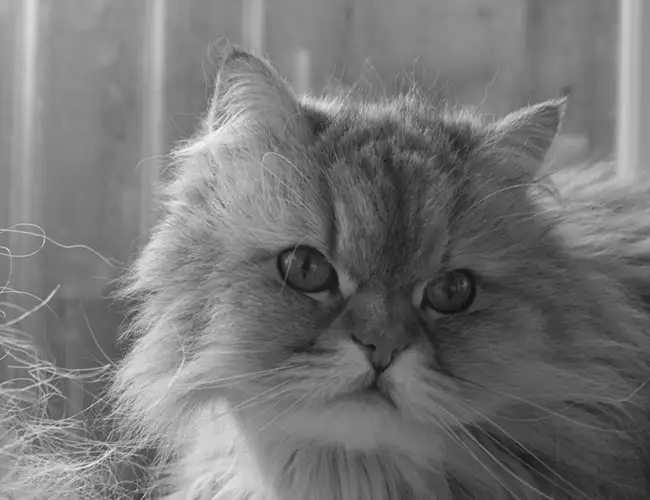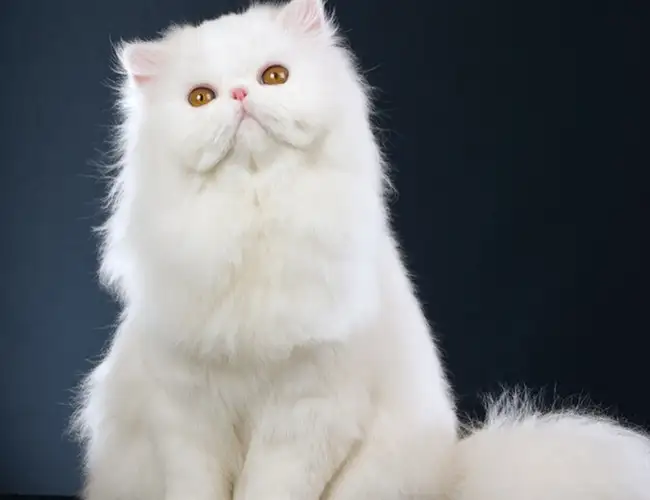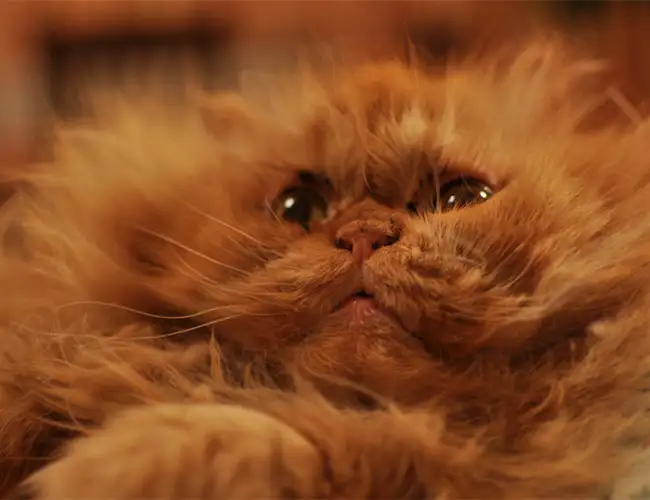
A full detailed article about Persian cat
Persian cats, also known as Persian, Chinchilla or Himalayan, have a Latin name of Persian. In people’s impression, their name represents nobility. In China, most people start to raise pet cats with Persian cats. However, the Persian cats raised by most breeders are not purebred Persian cats, but non-purebred Persian cats bred by some merchants to cater to the consumer market. This can be seen from their prices. Generally speaking, the price of a purebred Persian cat is thousands of dollars.
Like many cats, although they are called Persian cats, they are not a breed born in Persia. Persian cats originated in Persia (Iran) and are a breed that was bred in the UK over 100 years based on the native long-haired cats of Afghanistan and the Angora long-haired cats of Turkey or Armenia. It is said that Queen Victoria raised two blue Persian cats, and Prince of Wales (Edward VII) praised them at a cat show. Since then, the reputation of Persian cats has become increasingly greater, and the public has also admired them.
CFA divides Persian cats into 7 sub-species based on the distribution of coat color: Solid Color, Silver & Golden, Shaded
& Smoke, Tabby, Parti-Color, Calico &
Bi-Color, Himalayan. GCCF divides Persian cats into 12 sub-species based on the distribution of coat color: Bi-Colour, Cameo, Chinchilla, Colourpoint, Exotic (Short
haired, Persian type), Golden, Pewter, Self, Shaded Silver, Smoke, Tortie
Tabby, Tortie & White.
Persian cats are distributed all over the world. Although they are impacted by the fierce emergence of new cats such as Ragdoll cats, Exotic Shorthair cats, Scottish Fold cats, etc., the Persian cat’s status as “the most popular cat among pet owners” has not been shaken. This is enough to show how great the charm of Persian cats is.
A misunderstanding about Persian cats
Many people believe that the eye colors of Persian cats must be different, but this is not the case. It is generally believed that in addition to the most familiar blue, the eye colors of Persian cats also include amber, green, copper, gold, strange colors, and two eyes with different colors (mandarin duck eyes).
Persian cat characteristics

Most people know that Persian cats are aristocratic, so their every move reveals their elegance. For example, they are not as active as some cats, but like to stay quietly aside and watch their owners; their voices are always so gentle, and the occasional coquettish call can melt the owner’s heart; they will not “fly past” you when they walk, they seem to always maintain their elegance.
Detailed description of the morphological characteristics of Persian cats
Head:
Round and large, with a very broad skull and plump cheeks.
Ears:
Small ears are preferred with rounded tips, slightly tilted forward, open at the base, and wide apart. The base of the ears is lower than the skull. The eyes are large, round, slightly protruding, and moderately spaced, evenly spaced.
Eyes:
Large and round, bright in color, wide apart, giving a lovely look. (Literacy: Eyes of different colors are of mixed pedigree) Eye color depends on coat color. It is generally believed that the eye colors of Persian cats include blue, green, copper, gold, amber, strange colors, and two eyes of different colors (i.e. mandarin duck eyes).
Nose:
Short, flat and wide; the nose and eyes of a purebred Persian cat are in one line, so it is also called a one-line cat.
Chin:
Full, strong, rounded and well developed, reflecting a good bite.
Limbs:
Short and strong, forelimbs straight; hind limbs straight when viewed from behind.
Paws:
Strong, round and large; toes close together, five on each forelimb and four on each hind limb.
Coat color:
The coat color of Persian cats can be roughly divided into five color systems, with nearly 88 coat colors. Among them, the solid color system includes white, black, blue, red, cream, etc. The Chinchilla color system (= Chinchilla cat) includes mouse gray (hair tip color), gradient silver, gradient gold, etc. The smoke color system includes smoke (hair root white, gradient blue, gradient red, etc. The tabby colors include silver, brown, red, cream, blue, etc. The mixed color system includes tortoiseshell (tortie), tricolor (Calico), blue cream, and black and white, blue and white, red and white and other two-colors. Among the coat colors, red (mostly male) and tortoiseshell (mostly female) are relatively rare, so Persian cats with this coat color are also very precious.
If you want to buy a purebred Persian cat, but you don’t know much about cats, then you’d better take an expert with you to buy a cat. Generally speaking, the cats in regular pet stores have clear sources, but the price is higher. The next generation of domestic cats may have problems with appearance or purity, so buyers need to do a good job of identification.
Persian cat personality traits

Don’t think that Persian cats are the aristocrats among cats. They have a poor ability to adapt to new environments. On the contrary, they have a strong ability to adapt. Even if they are just brought home, they will not hide in the corner immediately. They will observe the new environment first, and then patrol slowly. If the owner is worried that the cat has gone to a place it shouldn’t go, you can follow them to accompany them, but they will definitely look like your owner.
Generally speaking, Persian cats are quite affectionate, but there is one exception – in the hot summer season, some cats will even push you away when you hold them. In the summer, cats may prefer to lie on the floor to help themselves get through the hot summer. Therefore, owners should do a good job of cooling down Persian cats in the summer. Buying a cooling pad or turning on the air conditioner regularly are both good choices.
Although Persian cats always move slowly, it does not mean that their reactions are also slow. Persian cats are very sensitive and can react quickly to the slightest disturbance.
Persian cats are quite clingy, but if you are too busy at work to pay attention to them, they will quietly stay by your side and watch you busy yourself. In fact, Persian cats really want to be comforted by their owners, so when you are resting or finishing your work, you must interact with them, touch their bodies, play a little game with them, etc., which will make them happy.
Persian cat care knowledge

The gorgeous appearance of Persian cats may make many people think that they are difficult to be delicate, and their long and dense hair also makes many people think that they are difficult to take care of. In fact, Persian cats are not that difficult to raise. With some tips on how to take care of them, you can completely make them follow your steps. Almost everyone who has raised a Persian cat said that as long as the care is done properly, the Persian cat can bring more joy to your life. Regarding the care of Persian cats, the owner needs to pay attention to the following points.
1. Help Persian cats comb their hair
Comb the coat with a neutral and soft bristle brush every day. To keep the coat smooth and beautiful, you should bathe with shampoo regularly. When the cat is dirty, wash the coat with a neutral soap in warm water, then wash and dry it immediately. Persian cats are prone to hair loss, and the hair on their abdomens is easy to tangle and knot, which can harbor dirt and breed bacteria, so they must be combed every day and bathed regularly every month. Combing the cat’s hair not only makes the cat’s hair healthier, but also stimulates the cat’s blood circulation, which is very beneficial to the cat.
2. Prevent cats from getting heatstroke
Persian cats are covered with fur and lack sweat glands on their body surface, so they are not very good at regulating heat. It is difficult for body heat to dissipate, and the temperature is relatively high, so they are very likely to suffer from heat stroke. If a cat has shortness of breath, confusion, frequent urination, staring eyes, and falls to the ground in the hot summer, it means that the cat has suffered from heat stroke. You can use the following first aid measures:
1. If a cat suffers from heatstroke in the sun, first quickly move the cat to a ventilated or shady place.
2. If there are ice cubes in the refrigerator at home, take them out and put them in an ice bag and put it on the cat’s head to lower the cat’s temperature. If there are no ice cubes at home, you can take some ice water, soak it with a towel, and then help the cat wipe its head.
3. You can put your cat in an air-conditioned room to help it cool down without using water or ice.
4. Use a needle to pierce the blood vessels on the cat’s ears or tail to let the blood out, while ensuring the room is ventilated.
5. If the above measures are ineffective, the pet should be sent to the hospital for professional treatment in time.
3. Taking a bath is not a trivial matter
If the cat has developed the habit of bathing since childhood, bathing the cat is almost like bathing a baby, and one person can do it. Don’t use too much bath water, so as not to drown the cat; or shower, slowly rinse with water. For cats that are not used to bathing or naughty cats, it is best to have two people cooperate, that is, one person fixes the cat and the other bathes the cat. When bathing, gently splash water on the cat or slowly spray water, and be careful not to splash water droplets, because splashing water droplets may scare the cat. After the cat is completely wet, use detergent or neutral soap to gently rub from the head, neck, back, tail, abdomen to limbs to produce foam, and then rinse thoroughly with another basin of clean water or spray.
During the entire bathing process, the cat cannot be drowned to prevent water from pouring into the cat’s ears and avoid soap bubbles irritating the cat’s eyes. After washing, quickly dry it with a dry towel. And comb the cat’s fur all over the body with a comb, and then put the cat in a warm place. If the indoor temperature is low, cover the cat with a towel to prevent it from catching a cold. You can also use a hair dryer to dry it, but pay attention to the temperature of the hair dryer. After the coat is completely dry, comb it carefully.
4. About the tear stains of Persian cats
Persian cats have short nasal passages, so they are prone to tear marks around their eyes. Especially for light-colored cats, tear marks on their faces are really ugly. In fact, as long as you pay attention to cleaning every day, you can easily remove them. The simple way is to wipe your eyes with a hot towel every day. You can mix some starch and boric acid powder in half and pat it on the tear marks. The powder can absorb stains and have a bleaching effect. Use a powder made of half starch and half boric acid powder to remove them; first make a paste with water.
Apply the paste carefully on the stains and let it dry naturally. After it dries, just brush it off and wipe it clean. Be careful not to let the powder fall into the eyes. These powder particles falling into the eyes may cause eye ulcers. Boric acid powder is not difficult to find, and it is effective for stubborn stains on cats’ faces. It can be bought in general western pharmacies.
Of course, the owner does not have to follow the experience and methods summarized by others to raise his or her cat. You can summarize some maintenance methods suitable for your cat according to the personality characteristics of your cat. This will not only allow the cat to enjoy a high-quality life, but also make the owner’s maintenance work a lot easier.
Persian cat feeding requirements

Everyone is advocating to feed Persian cats in a healthy, scientific and reasonable way, but few owners can really do it. Helping Persian cats develop good eating habits can not only make them healthy, but also reduce a lot of trouble for their owners. For example, if cats develop various diseases due to food problems, the owner will not only lose money and effort, but the cat will also have to endure the pain caused by the disease. If you buy a Persian cat, you must pay attention to the following six points when feeding them:
1. Don’t change the food bowl easily
The cat’s food bowl should be used regularly and should not be changed at will. Cats are very sensitive to changes in food bowls and sometimes refuse to eat because of a change of food bowl. Keep the food bowl clean. Put newspaper or plastic paper under the food bowl to prevent the food bowl from making noises when sliding and to make it easier to clean. Every time the cat eats leftover food, throw it away or collect it and mix it with fresh food and cook it before feeding it next time.
2. Feeding should be done at regular times and locations
Once a cat’s biological clock for “eating” is formed, it is relatively fixed and should not be changed at will. The place where the cat’s food is placed should be fixed. Cats do not like to eat in noisy places or places with strong light. If you have guests visiting, do not let the guests see your cat while it is eating. The presence of strangers will greatly reduce the cat’s appetite.
3. Let the cat eat food in the bowl
Cats have the bad habit of using their claws to pick up food or taking food out of the food bowl to eat. Once you find this happening, you should immediately teach them to correct it.
4. Warm food is most popular with cats
Cats like to eat warm food. Cold food not only affects cats’ appetite, but also easily causes digestive disorders. Generally speaking, the temperature of food should be between 30 and 40 degrees. Food taken out of the refrigerator should be heated before feeding. Cats sometimes eat grass to promote digestion.
5. Ensure adequate drinking water
Although cats don’t drink much water, you must have plenty of clean drinking water. Cats must drink clean water, and the water must be changed every day. The drinking bowl can be place on the side of the food dish. So that the cat can drink freely when thirsty.
6. Always pay attention to your cat’s appetite
There are many reasons that affect cats’ appetite, mainly feed, environment and disease. If the cat’s food is monotonous, not fresh, or the smell, concentration and taste of the food are not to its taste. The cat will refuse to eat. If the cat’s feed is prepared with more variety and better palatability, the cat can always maintain a high appetite. In addition, the taste of the food should not be too light or too salty. Cats like to eat sweets or fishy food. In addition, strong light, noise, the presence of strangers or interference from other animals can affect the cat’s appetite. If these two factors are improved, the cat’s appetite still does not improve. Then the cat may be sick, then you should consult a veterinarian in time.
It takes more than one or two days to cultivate good eating habits for cats. During this process, it is easy for the owner to encounter the problem of cats not cooperating. If encountering such a situation, the owner must not be soft-hearted. Insisting on letting the cats do what you require is the real responsibility for their lives.


One thought on “A full detailed article about Persian cat”